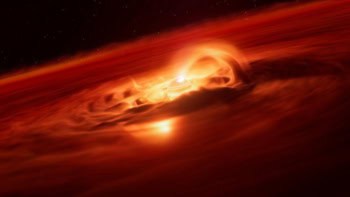There may be no such thing as a “job for life” these days, but NASA’s Voyager mission to Jupiter, Saturn and beyond has kept hundreds of scientists busy for as much as 35 years. Mark Williamson reveals how researchers stay motivated and scientifically productive during such a long-term project
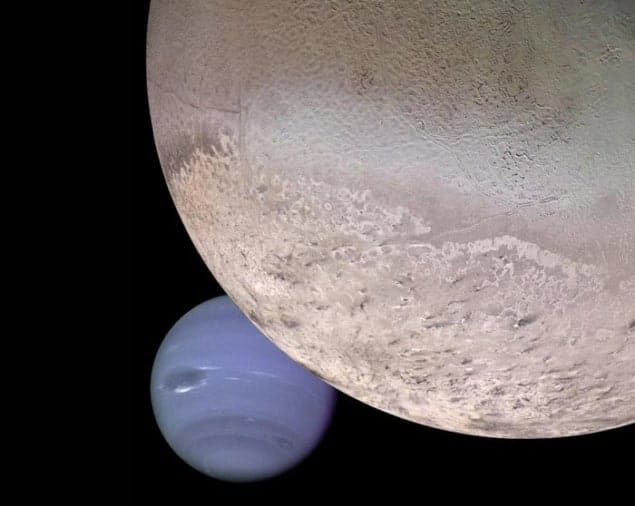
In the summer of 1977, as the strains of David Soul, Abba and Hot Chocolate wafted from their transistor radios, most physics students were busy cramming an extra pair of flares into their rucksacks in preparation for a trip on the highways of North America or the railways of Europe. Few would have been aware that two Voyager spacecraft were about to be launched on journeys of their own, on 20 August and 5 September 1977 respectively, towards the gas giants of our solar system. Yet even avid followers of the development of these pioneering planetary probes could not have possibly guessed that the Voyager mission of exploration would continue, unabated, for the duration of their professional careers.
One of those young physicists was Linda Spilker, who had graduated earlier that year and applied for a job at the Jet Propulsion Laboratory (JPL) in Pasadena, a peaceful and relatively green suburb of the Los Angeles conurbation. “My interview went well and I was offered a job,” recalls Spilker. “I had a choice between working on the Viking extended mission or on a new mission called Voyager. Having never heard of Voyager, I asked ‘Where is Voyager going?’ ” When she heard the craft were going to Jupiter, Saturn and maybe on to Uranus and Neptune, she immediately replied: “Sign me up!”
The JPL project scientist for Voyager at the time – and the man still most likely to be identified with the mission – was Edward Stone. Stone had joined the California Institute of Technology (Caltech), which operates JPL under contract to NASA, in 1964 to help establish a research programme in space physics. Today, he is a professor of physics at Caltech and – as testament to his long-standing contribution to the mission – remains the Voyager chief scientist at JPL. As for Spilker, she worked on Voyager from early 1977 until it flew past Neptune in 1989 and is now the project scientist for the Cassini mission to Saturn, with which she has been involved since 1988.
A cursory glance at the career timelines of these two scientists suggests that long-term NASA missions retain the concept of a “job for life” familiar to workers of the 1970s. But given that planetary missions are years in the planning and the resulting spacecraft then take years to reach their targets, what is it that keeps planetary scientists focused on the task and sufficiently interested to devote a good portion of their careers to what is basically a hi-tech form of data collection?
Grand ambitions
The 1970s were heady days in space exploration for NASA, with the Apollo lunar programme taking most of the limelight at the beginning of the decade. But scientists were already looking further afield. Spacecraft fly-bys of Venus and Mars had been successfully conducted as early as 1962 and 1965, by Mariner 2 and 4 respectively, and preparations were under way for the Mars-Viking landing mission. Next in line were the gas giants.
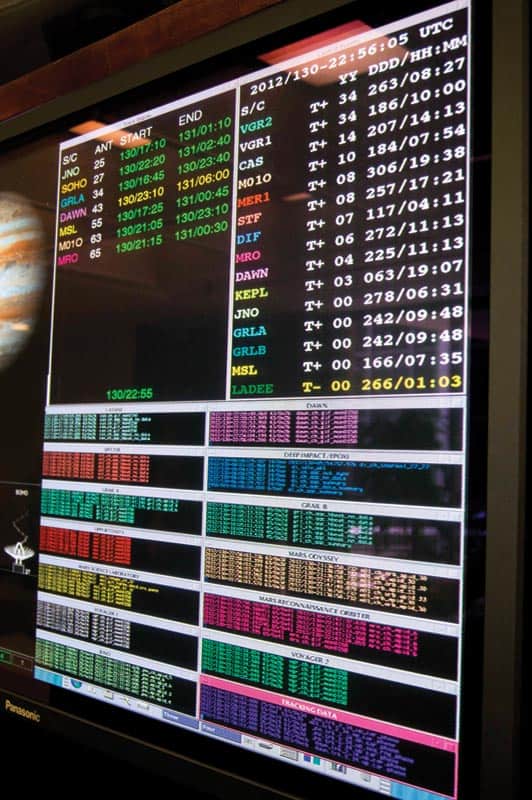
As a “first feel” beyond the asteroid belt, which encloses the inner four planets (Mercury, Venus, Earth and Mars), a pair of 250 kg spacecraft called Pioneer 10 and 11 were launched towards Jupiter in 1972 and 1973, and they conducted fly-by missions in 1973 and 1974, respectively. A combination of powerful rockets, favourable launch windows and relatively lightweight spacecraft produced uncharacteristically fast journey times, which gave the misleading impression that solar system exploration could be done on the timescale of a typical PhD.
Meanwhile, funding was becoming an issue and an extravagant “Grand Tour” mission to Jupiter, Saturn, Uranus, Neptune and beyond – planned as a result of a fortuitous alignment of the planets – was shelved. However, all was not lost. As Stone explains, “When NASA decided in early 1972 that the budget would not support such a mission, JPL proposed ‘Mariner Jupiter Saturn 1977’, a much lower-cost four-year journey to Jupiter and Saturn”. The mission was later renamed Voyager and in 1977 the sister probes were launched to Jupiter and beyond.
Following fly-bys of Saturn in 1980 and 1981, Voyager 1 was targeted out of the plane of the solar system and veered off towards its edge, while Voyager 2 continued the tour to Uranus (in 1986) and Neptune (in 1989, some 12 years after launch). According to Stone, the possibility of exploring beyond the planets was part of the scientific planning for the Grand Tour. By 1970 astronomers had realized that the supersonic expansion of the solar corona, known as the solar wind, creates a giant plasma bubble around the Sun. Called the heliosphere, the bubble envelops all of the planets and serves as a shield against the interstellar wind, impeding the entry of cosmic rays from outside. “A mission to interstellar space would provide the first opportunity to directly determine what is outside pressing to get in,” says Stone, explaining the reasoning for splitting the Voyager mission.
Voyager 1 officially began the Voyager Interstellar Mission on 1 January 1990, passing the long-defunct Pioneer 10 to become mankind’s most distant artefact on 17 February 1998.
Knowing the unknown
At a fundamental level, the motivation behind these planetary missions is part of humankind’s unending quest to know the unknown. Stone characterizes this quest by dividing what Star Trek termed “the final frontier” into three: expanding our knowledge of all that is around us (the knowledge frontier); developing new systems to observe the solar system (the technology frontier); and actually sending those craft to new places (the physical frontier). “Expanding these three frontiers of space often involves long journeys that are not without risk,” says Stone, “but the opportunities to learn about the diversity of objects in the solar system are unequalled.” Stone’s analysis is thoughtful, but fails to explain why some scientists dedicate much of their professional lives to a long-term mission such as Voyager.
Spilker says her 12-year stint on Voyager was fuelled by a sense of “being an explorer, of seeing worlds and vistas that no-one had seen before”. For her, the thrill lay in witnessing volcanoes on Io and geysers on Triton, plotting the structure in Saturn’s rings and being the first to see the Uranian satellites and rings up close. “Each fly-by left me with a sense of wanting to see more,” she says.

Planetary scientists are apt to use phrases such as “we are now at Jupiter”. Of course, they mean their spacecraft and its scientific instruments are at Jupiter, but there is more to it than that. They seem to transport themselves to the planet in question, vicariously enjoying the view from imaging telescopes on board the spacecraft. However, they have to be patient. Although Spilker stayed with Voyager until the Neptune encounter in 1989, she had already become involved with planning the Cassini mission to Saturn, a liaison that continues to this day. While the pace of Voyager’s progress through the solar system had not exactly been brisk, it had not prepared her for the protracted timescale of Cassini. “One of the negatives of working on Cassini was that I had to wait much longer for, first, the launch in 1997, then the long trip to Saturn, before going into orbit and getting science data in 2004,” she says.
The reason for Cassini’s lengthy seven-year cruise to Saturn is one of basic physics: specifically, the relationship between mass, velocity and inertia. In the two decades since Voyager was launched, spacecraft had developed significantly in terms of complexity, and thus mass, in order to encompass the enhanced expectations of space scientists. Cassini carried the European Space Agency’s Huygens probe, which was dropped onto Saturn’s Moon Titan, bringing the total launch mass to some 5600 kg – eight times that of Voyager. Not only did this mass have to be accelerated out of Earth’s gravity well, but it also had to be decelerated at Saturn, which required additional onboard propellant and hence yet more mass. The solution was to fly a gravitational-assist or “sling-shot” trajectory that exchanged momentum first with Venus and then Jupiter to provide propulsion without expending propellant. In the event, Cassini performed gravity-assist fly-bys of Venus in 1998 and 1999, of Earth in 1999 and of Jupiter in 2000, finally arriving in orbit around Saturn in July 2004. When the Huygens probe eventually parachuted through Titan’s atmosphere to land on its alien surface, it produced some fascinating science (see “Tuning into Titan” February 2006 pp20–23).
All in the family
Despite the wait, Spilker is positive about being involved in long-term missions. “It was exhilarating to be part of designing the next Saturn mission from the ground up, seeing the instrument teams selected, the spacecraft built and then launched,” she says. Equally important, however, is the “sense of family” that develops during the years of working on long-term missions. “This strong connection to the Voyager family (and now the Cassini family) is one of the things that made me want to stay for the long haul with both missions,” says Spilker. “Even though I have moved to Cassini, I still root for Voyager to reach the edge of the solar system and read about its latest accomplishments with a great deal of pride and pleasure.”
This sense of family is further illustrated by a tendency to anthropomorphize the spacecraft. Spilker remembers the time a spacecraft automatically switched itself into “safe mode” because its onboard computer detected an anomaly. “I started rooting for it to recover…I worried about the health of Voyager as though it was a friend or even one of my children.”
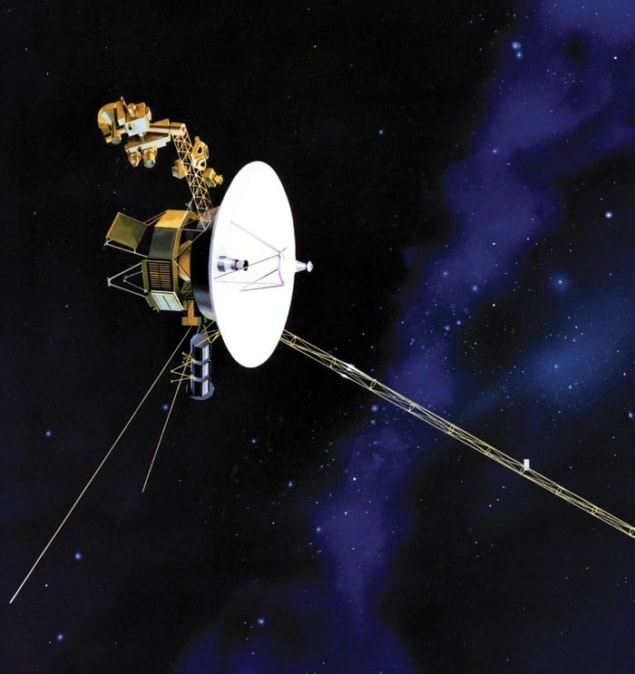
But what about keeping up with one’s real family? Balancing a profession and a family can be challenging at the best of times. “Personally, I had to interweave my personal life with my professional life,” admits Spilker, which affected the timing of starting a family. “When I tell my daughters that their births are based on the alignment of the planets, I mean that! There was a five-year window between the Voyager Saturn fly-by in 1981 and the Uranus fly-by in 1986 when I had both of my daughters. Other Voyager moms made similar choices.”
Still, in common with many professions, space science can mean long hours away from the family and outside life. “Working on planetary missions provides a cadence for your life that is driven by the needs of the mission,” says Spilker. “When a mission is active – such as during a planetary fly-by, planetary orbit insertion or roving on the surface of a world – activities outside JPL become secondary for a time and the focus is on the success of the mission.”
On the other hand, Spilker was able to share the excitement of her job during family visits and “take your daughters to work days”. And just like any other group of mothers, the Voyager parents took their children to the same schools, attended the same daycare and often compared notes about raising a family.
Apart from having children, what do space scientists do to occupy themselves during the long hiatus of the cruise phase? According to Stone, for Voyager this was not as much of an issue as first appears. “With six encounters in the first 12 years, the 11 science teams were kept very busy analysing data from each encounter while also planning the observational sequence for the next.” He concedes, however, that when Voyager 1 began heading for interstellar space in 1990, the pace of discovery changed.
In fact, most space scientists are involved with more than one mission at a time, to an extent dependent on the mission phase. For example, during the 40 years of Stone’s association with Voyager, he has also participated in missions such as Galileo (to Jupiter), SAMPEX (studying the Earth’s magnetosphere), ACE (looking at energetic matter from the solar wind and interplanetary space) and STEREO (studying the Sun), the latter two of which are still operational.
Moreover, the results from one mission can continue to be useful long after data collection. According to Spilker, during the long cruise phase of Cassini, “many of us went back to further study the Voyager data to look for clues on how to use our new instruments”. In parallel, she worked on concepts for a mission to Mercury and for orbiters around Uranus and Neptune.
Job for life?
So how do today’s young scientists view the prospect of working on such long-term missions? Understandably, a seven-year cruise must seem like a lifetime when you are 21. Yet Spilker is surprised by how many young people want to work on long-term missions. “On Cassini, we had more than 50 scientists, the vast majority early-career scientists, competing for those spots,” she says.
One of them was Estelle Deau, who arrived in post just as Cassini was about to enter orbit. “At first I thought the timing was perfect,” she says, “but I was not fully prepared for the mission, especially the observation planning.” In retrospect, she admits she would have preferred to have been there from day one, to be able to prepare her own observation plan. Clearly, the sense of “data ownership” is strong, even among the young.
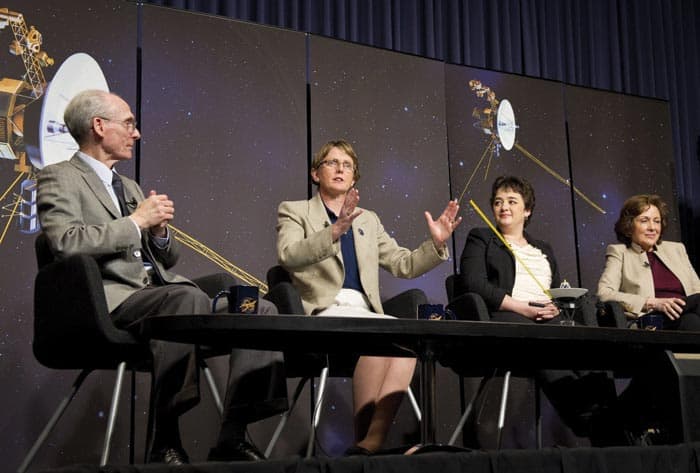
As a result of this competitive spirit, the qualification density at JPL is fairly high. Speaking in May at the Spacecraft Technology Expo in Los Angeles, deputy director Eugene Tattini said that 31% of employees have a PhD, 33% a Master’s or similar and 27% a first degree; only 9% have no degree. “Everyone at JPL has a doctorate except the janitor and the deputy director,” he joked. “The difference is the janitor is working on his dissertation!”
In confirmation that young people remain attracted to space science, Tattini painted JPL as a cross between an academic institution and a Silicon Valley start-up. “A discovery is typically made at 3 a.m. in a lab, by a person who probably never wore long pants,” he said, with a nod to their preference for beach shorts and other less formal attire.
To boldly go…
Since the Voyager Interstellar Mission began in 1990, Voyager 1 has been speeding towards the notional edge of the solar system at around 60,000 km/h, or some 3.6 AU per year (where one astronomical unit, or AU, is the Earth–Sun distance of 150 million km). In December 2004 it crossed a feature known as the termination shock, at about 94 AU, and entered the heliosheath (see “Voyagers probe the heliosphere”). It is currently some 18 billion km (122 AU) from Earth, at a point where its radio signals, travelling at the speed of light, take an unbelievable 17 hours and 19 minutes to reach us. (Check where it is right now at http://voyager.jpl.nasa.gov/where/index.html.)
The location of the heliopause – the boundary with interstellar space – is not known, but it has been estimated that Voyager will reach it about 10 years after crossing the termination shock, which could be anytime soon. Indeed, according to Stone, the spacecraft has already been monitoring a gradual increase in galactic cosmic rays for the past three or four years, and from May this year, “cosmic ray hits have increased 5% in a week and 9% in a month”. Although that increase does not prove anything yet, scientists expect a precipitous drop in the number of energetic particles detected from within the heliosphere as the spacecraft crosses the heliopause, and that number has already been falling. A further indication of the breakthrough will be a change in the orientation of magnetic field lines, which are expected to rotate from east–west towards a more north–south direction.
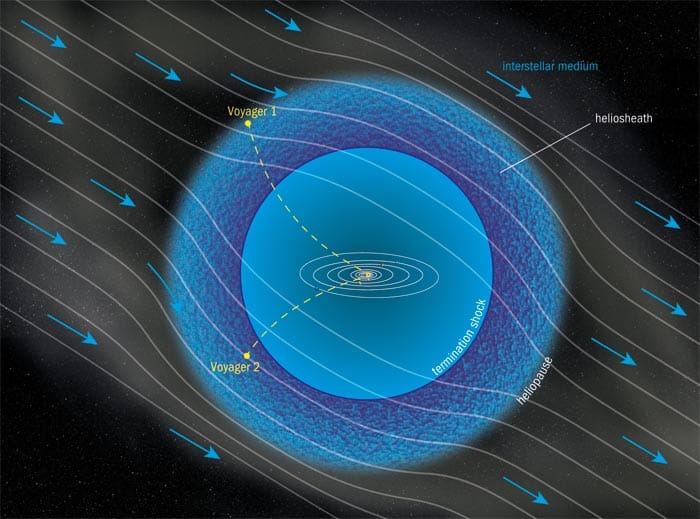
“When the Voyagers launched in 1977, the space age was all of 20 years old,” reflects Stone. “Many of us on the team dreamed of reaching interstellar space, but we really had no way of knowing how long a journey it would be – or if these two vehicles that we invested so much time and energy in would operate long enough to reach it.”
Spilker remains optimistic about the prospect: “When I think of the Voyagers today, I think of the Energizer Bunny. They keep going and going…to the very edge of the solar system.”
Most physicists will appreciate the excitement of the search for another “data point” in their own particular field, but probably find it more difficult to appreciate a similar thrill in another field. Stone helps to put Voyager’s continuing mission in context. “Detecting the edge of the heliospheric bubble will be a historic milestone in humankind’s longest journey. Inside the bubble the solar wind and the magnetic field come from the Sun; that’s where the Voyagers have been for the last 35 years and where all of the planets and most of the Kuiper Belt Objects are. Outside, the wind is from the supernova explosions of nearby stars that occurred five to 20 million years ago.”
The only question remaining is how much longer the Voyagers can last. Will they ever be pensioned off – or are they, like the people who devote their careers to them, on a mission for life?

